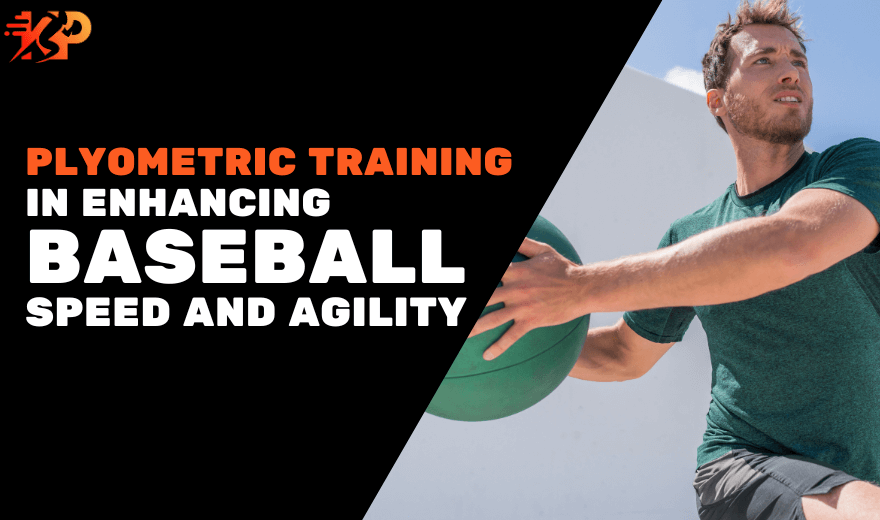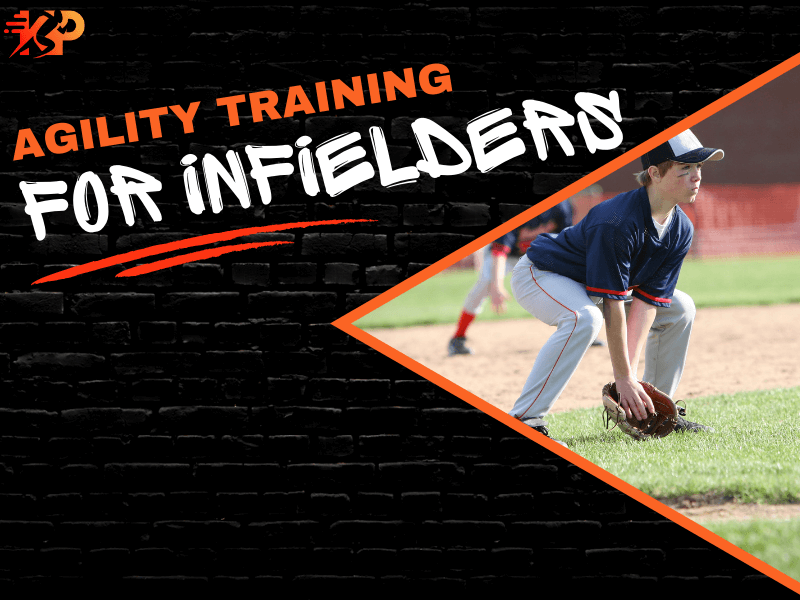Plyometric Training in Enhancing Baseball Speed and Agility
By Mark Keil, CSCS
Posted on August 18, 2024

Speed and agility are critical attributes of a High Performing Baseball Athlete. Whether sprinting from home plate to first base, stealing second, or reacting swiftly to a ground ball, baseball players rely heavily on their ability to move explosively and change direction quickly.
Plyometric training, which focuses on developing these skills, has become an essential component of athletic training for baseball players at every level.
This article discusses the role of plyometric exercises in enhancing speed and agility for baseball athletes. It offers insights into specific drills and the associated benefits.
Understanding Plyometrics: The Science Behind the Explosiveness
Plyometric training involves exercises requiring muscles to exert maximum force in short intervals, aiming to increase power (speed-strength).
These exercises typically involve a rapid stretching of the muscle (eccentric phase) followed by an immediate shortening of the muscle (concentric phase). This cycle of stretching and contracting is known as the stretch-shortening cycle (SSC), which is critical to improving explosive power.
The SSC is vital for baseball players because it mimics the type of movements required on the field—quick, powerful bursts of speed and agility. When a player sprints to steal a base, jumps to catch a fly ball, or makes a quick pivot to throw, they are utilizing the SSC.
Plyometric training enhances this cycle, making muscles more efficient at storing and releasing energy, translating into faster sprints, reactions, and more agile movements.
Key Plyometric Exercises for Baseball Players
There are many plyometric exercises baseball players can incorporate into their training regimen to improve speed and agility.
Below are a few examples:
1. Box Jumps
The Box Jump is a plyometric movement that develops lower body explosive power, improves the vertical, and enhances coordination.
How to Perform
- Stand in front of a sturdy box or platform.
- Jump explosively onto the box from a squat position, landing softly with both feet.
- Step down and repeat.
Benefits: Box jumps train the leg muscles to generate power quickly, which is essential for sprinting and jumping. For baseball players, this translates into faster acceleration and more explosive leaps.
2. Lateral Bounds (or Skaters)
The purpose of Lateral Bounds is to increase lateral agility and stability, which is crucial for change of direction quickness.
How to Perform
- Stand on one leg
- Then, leap laterally to the side, landing on the opposite leg.
- Repeat the movement back to the starting position.
Benefits: Lateral bounds mimic the side-to-side movements common in baseball, such as shuffling to field a ground ball or moving to tag a base. This exercise enhances the ability to move quickly and efficiently in any direction.
NOTE: I typically do not have an athlete perform Lateral Bounds until they are proficient at performing the Lateral Lunge.
3. Depth Jumps
This plyometric movement improves reactive strength and decreases ground contact time.
How to Perform
- Stand on a box or platform
- Step off, landing softly on the ground.
- Immediately upon landing, jump as high as possible. (The focus should be on minimizing the time spent on the ground.)
Benefits: Depth Jumps train the body to react quickly upon ground contact, which is beneficial for baseball players who need to make fast, explosive movements after running or jumping.
4. Slam Ball Slams
Slam Ball Slams enhance upper body power and core strength, aiding in powerful throws and swings.
How to Perform:
- Hold a medicine ball overhead
- With full force, slam it down onto the ground.
- Catch the ball and repeat.
Benefits: This exercise builds the explosive strength needed for powerful throws from the outfield or rapid bat swings, contributing to better overall performance.
NOTE: This exercise is typically called ‘Med Ball Slams’. I call it Slam Ball Slams because it’s important that the athlete use a Slam Ball. The reason being that the Medicine Ball will bounce back powerfully while the Slam Ball is made to absorb most of the energy when it hits the ground (though it will still bounce back some).
5. Tuck Jumps
The Tuck Jump boosts leg strength and speed, focusing on high knees and rapid jumping.
How to Perform
- Jump as high as possible, bringing your knees toward your chest at the peak of the jump.
- Land softly and repeat immediately.
Benefits: Tuck jumps enhance leg strength and the ability to quickly generate upward force, improving running speed and jumping ability on the field.
NOTE: I do not have an athlete preform a Tuck Jump until they have mastered the Squat Jump and / or Max Vertical.
How Plyometrics Translates to On-Field Performance
The benefits of plyometric training are evident in the physical attributes it develops. Still, the true value lies in how these improvements translate to on-field performance.
For baseball players, this means faster sprint times, more agile movements, and increased power in both offensive and defensive actions.
Plyometrics Increase Sprint Speed
Plyometric exercises such as box jumps and tuck jumps improve the explosive power of the leg muscles, directly translating into faster sprint times. A player who can accelerate quickly off the mark is likelier to beat a throw to first base or steal a base successfully.
Plyometrics Improve Agility
Lateral bounds and depth jumps enhance a player’s ability to change direction swiftly and efficiently. Infielders, for example, often need to react to unpredictable bounces or quickly pivot to throw to a base. Plyometric training makes these movements more fluid and less taxing on the body, reducing the likelihood of errors.
Plyometrics Increase Explosive Power
Slam ball slams and other upper-body plyometrics develop the explosive strength needed for powerful throws and swings. Outfielders who can throw accurately over long distances or batters who can generate more power in their swings will have a significant advantage on the field.
Incorporating Plyometrics into a Baseball Training Program
While plyometric training offers numerous benefits, baseball players must properly incorporate these exercises into their training regimen to avoid injury and maximize effectiveness. Here are some key considerations:
Warm-Up and Cool Down: Always begin with a dynamic warm-up to prepare the muscles and joints for explosive movements. After the plyometric session, cool down with static stretches to aid recovery and prevent injury.
Start Slow: Beginners should start with basic plyometric exercises at low-intensity and gradually increase the difficulty and volume as their strength and technique improve. This progression helps prevent overtraining and reduces the risk of injury.
Quality Over Quantity: Plyometrics is about explosive power, so focus on performing each rep with maximum effort and proper form. It’s better to perform fewer reps with good technique than to perform many reps with poor form (which can lead to injury).
Rest and Recovery: Plyometric exercises are taxing on the body, so adequate rest between sessions is crucial. Rest allows the muscles to recover and adapt, leading to more significant gains in strength and power.
Conclusion
Baseball athletes can improve their on-field performance by incorporating specific exercises targeting explosive power. Whether sprinting faster, changing direction more quickly, or generating more power in throws and swings, the benefits of plyometric training are clear.
With proper integration, the athlete can take their game to the next level, becoming a more dynamic baseball player.
Do you (or does your athlete) need to improve their speed and agility in baseball?
If you live in Tulsa, Oklahoma and are looking for one of the Top Speed and Agility Training Programs near you, come check out the program for free. I train athletes weekly at World Baseball Outreach and we have several class times available.
Have questions about Plyometric Training? Let me know!
Training Resources









